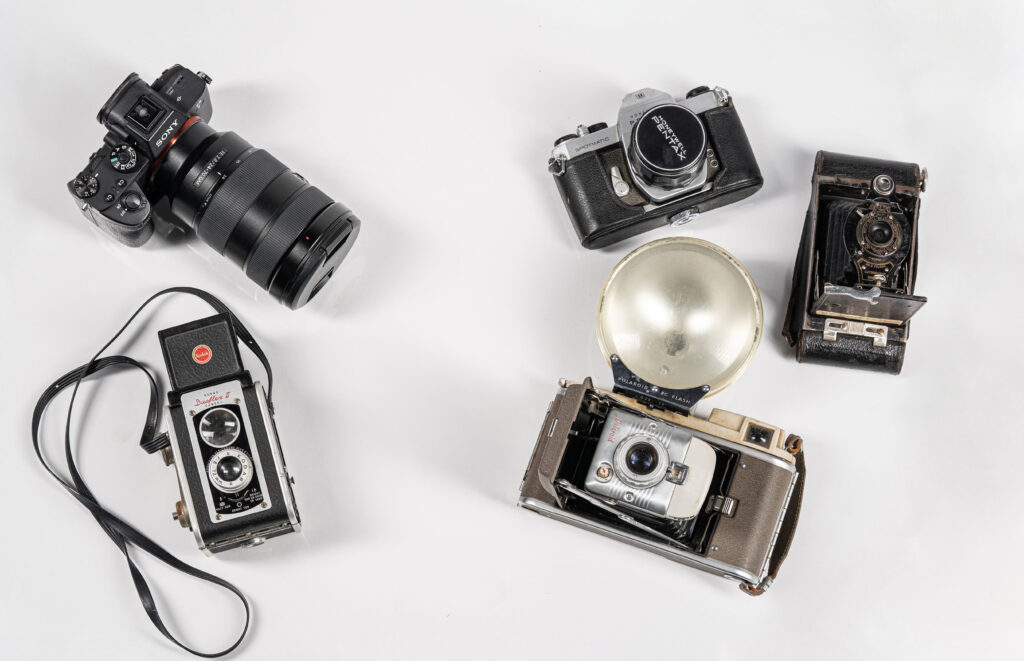Looking for tips for taking better photos? This series contains pro tips for improving your images. These are just a few of the many things that can make a photograph better. But the most important thing you can do is to capture important moments the way you see them.
CLEAN YOUR LENS
Did your grandma tell you cleanliness was next to godliness? Well, it’s also pretty important when it comes to getting sharper, brighter images and better overall photos. How many times a day is your phone in and out of your bag or pocket or purse? Your camera lens isn’t protected from your fingerprints, the oils on your hand, the food you eat, or whatever left that sticky residue in your jacket pocket. You’ll be amazed at the difference a clean lens makes. You can use your shirt or a napkin but, over time, these will scratch the lens. Professionals use microfiber cloths for lens cleaning. And for their DSLR cameras, they use a blower and a soft brush before using a microfiber. Avoid alcohol for cleaning unless you have very sticky or smeared debris.
LOOK AT LIGHT
Like really look at it! Find the main source of light. Is it the sun? A lamp? Candlelight? Once you know the source, identify its direction. Where do shadows fall? This will tell you where you should place your subject. The main light source is the “key” light and, in general, should be in front of your subject or slightly to the side. Soft, diffused light is the most flattering light. Find this in open shade or by windows and doorways, with your subject facing the light. If you’re not using additional lighting like a flash or a reflector, be sure to avoid backlighting your subject. The light should be to your back as you shoot.

BEWARE THE BACKGROUND
Make your subject the focal point by removing distracting objects, colors, or textures. This can be done by physically removing items or by cropping in and filling the frame with your subject. Anything around your subject should contribute to the photo, not distract the viewer.
THINK ABOUT COMPOSITION
It’s ok to break the rules. In fact, it is sometimes the best thing you can do in photography. But in order to break the rules, you need to understand them. The Rule of Thirds is a great example. The Rule of Thirds for composition means you put your subject in the left or right third of an image, leaving the other two thirds more open. If you break this rule, make sure there’s a purpose.

There are five elements of composition you should keep in mind: lines, shape, framing, depth, and point of view. Think about where your eye goes when you look at an image. Beware of lines or arrows created by your foreground or background that may lead the viewer’s eyes to something other than your subject.
HONOR YOUR SUBJECT
Don’t put baby in the corner! Your subject should be the hero of your image, whether your subject is a person, an object, or your dinner. Look critically at your subject to see if you are capturing its essence or personality. Make sure you are presenting your subject in a flattering manner. And remember that no subject should compete for significance; it should have your full attention.
HELP PEOPLE RELAX
Not everyone loves to be photographed. As a photographer, your job is to make your subject comfortable. Relax and have fun with them to bring out their personality and their most natural smile. Asking them to do a fake laugh will help capture their truest smile. Stiff, unnatural shoulders a problem? Ask them to do a shoulder roll, take a deep breath, and relax. Shoulders are not supposed to touch your ears!
For women, have them turn slightly to the side and put their weight on their back leg. For men, have them lean slightly towards the camera. For anyone whose posture is not straight, ask them to imagine there’s a string coming out the top of their head that is gently pulling them toward the ceiling. Have them point their chin slightly toward the camera and down.
Be willing to take shots with your subject’s head angled in both directions and let them decide which side they like better. Almost all of us have a “good side”.

TRY NEW ANGLES
After you’ve positioned yourself for the best light, framing, and background, try moving around your subject. Get higher, lower, closer, further away. Try vertical and horizontal orientations. Use the wide angle lens on your camera for a unique look. Don’t be afraid to experiment.
PRACTICE AND PLAY
Play around with your phone’s camera settings. Learn how they change the end result. You can have as much or as little control over settings as you are comfortable with. But push yourself. In this digital age, it costs nothing to shoot bad or just not-great images. And you learn more every time you change another setting.


